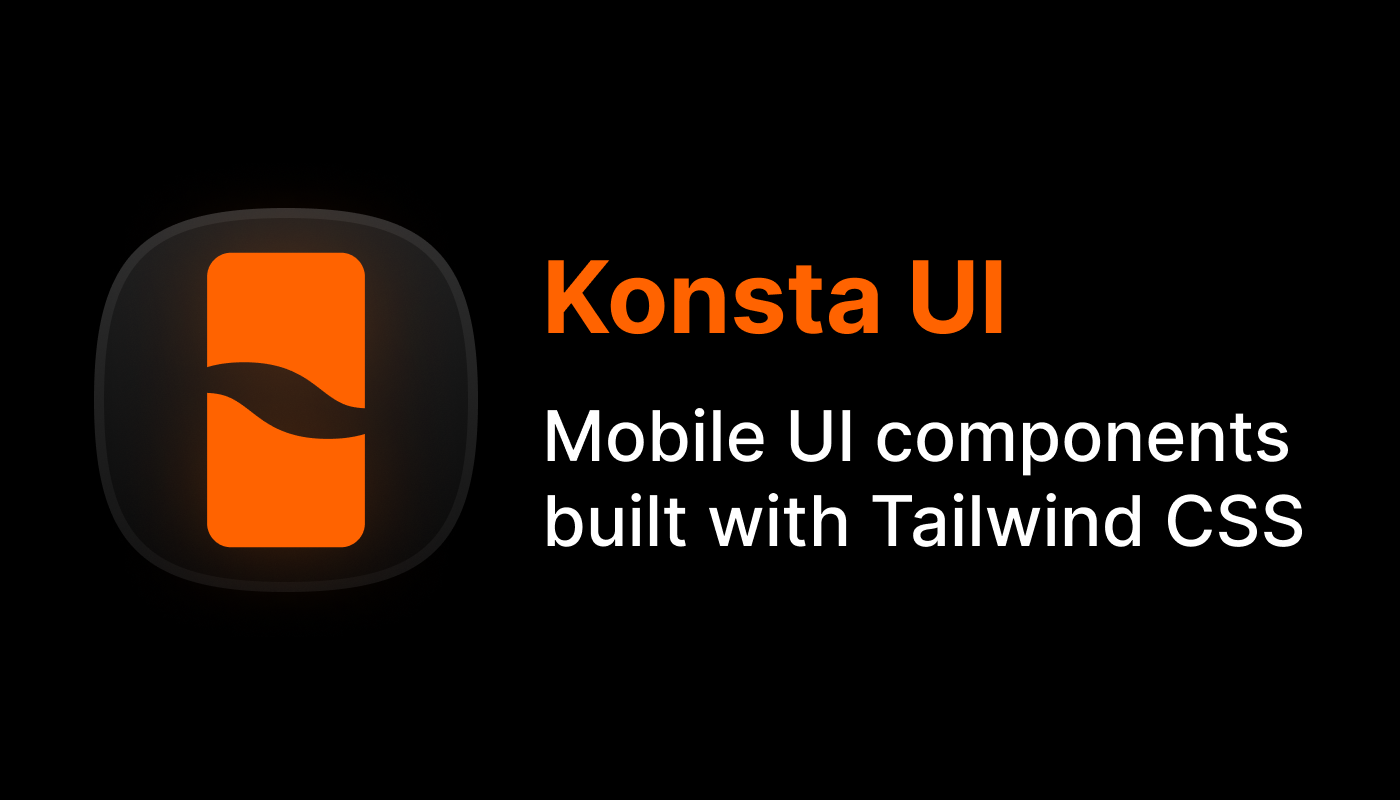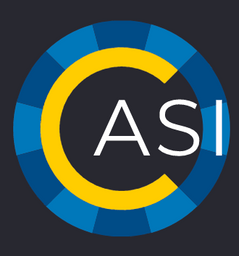Top Related Projects
Full featured HTML framework for building iOS & Android apps
A powerful cross-platform UI toolkit for building native-quality iOS, Android, and Progressive Web Apps with HTML, CSS, and JavaScript.
Remote Administration Tool for Windows
Build smaller, faster, and more secure desktop and mobile applications with a web frontend.
⚡ Empowering JavaScript with native platform APIs. ✨ Best of all worlds (TypeScript, Swift, Objective C, Kotlin, Java, Dart). Use what you love ❤️ Angular, React, Solid, Svelte, Vue with: iOS (UIKit, SwiftUI), Android (View, Jetpack Compose), Dart (Flutter) and you name it compatible.
Quick Overview
Konsta UI is a mobile-first UI component library for React, Vue, and Svelte applications. It provides a set of ready-to-use UI components that mimic the look and feel of native iOS and Material Design interfaces, allowing developers to create mobile apps with a native appearance using web technologies.
Pros
- Cross-framework compatibility (React, Vue, and Svelte)
- Faithful recreation of iOS and Material Design aesthetics
- Customizable themes and styles
- Lightweight and performance-optimized
Cons
- Limited to mobile-first design, may not be suitable for desktop-focused applications
- Relatively new project, potentially less mature than some alternatives
- Documentation could be more comprehensive
- Smaller community compared to more established UI libraries
Code Examples
- Creating a basic page with a navbar and list:
import { Page, Navbar, List, ListItem } from 'konsta/react';
function MyPage() {
return (
<Page>
<Navbar title="My App" />
<List>
<ListItem title="Item 1" />
<ListItem title="Item 2" />
<ListItem title="Item 3" />
</List>
</Page>
);
}
- Using a button with an icon:
import { Button, Icon } from 'konsta/react';
function MyButton() {
return (
<Button>
<Icon ios="plus_circle" material="add_circle" />
Add Item
</Button>
);
}
- Creating a form with input fields:
import { List, ListInput } from 'konsta/react';
function MyForm() {
return (
<List inset>
<ListInput
label="Name"
type="text"
placeholder="Your name"
/>
<ListInput
label="Email"
type="email"
placeholder="Your email"
/>
</List>
);
}
Getting Started
To start using Konsta UI in your React project:
- Install the package:
npm install konsta
- Import and use components in your React app:
import React from 'react';
import { App, Page, Navbar, Block } from 'konsta/react';
function MyApp() {
return (
<App theme="ios">
<Page>
<Navbar title="My App" />
<Block>Hello, Konsta UI!</Block>
</Page>
</App>
);
}
export default MyApp;
Remember to wrap your app with the App component and specify the desired theme ('ios' or 'material').
Competitor Comparisons
Full featured HTML framework for building iOS & Android apps
Pros of Framework7
- More comprehensive and feature-rich, offering a complete mobile app development framework
- Larger community and ecosystem, with extensive documentation and resources
- Supports both iOS and Android with platform-specific UI components
Cons of Framework7
- Steeper learning curve due to its extensive feature set
- Larger file size and potentially heavier performance impact
- More opinionated structure, which may limit flexibility in some cases
Code Comparison
Framework7:
const app = new Framework7({
root: '#app',
name: 'My App',
theme: 'auto',
routes: [
// Routes configuration
]
});
Konsta:
import { App, Page, Navbar, Block } from 'konsta/react';
function MyApp() {
return (
<App theme="ios">
<Page>
<Navbar title="My App" />
<Block>Hello World</Block>
</Page>
</App>
);
}
Framework7 provides a more structured approach with a configuration object, while Konsta offers a more React-like component-based setup. Framework7's code snippet demonstrates its routing capabilities, whereas Konsta's example showcases its simplicity and ease of use with React components.
A powerful cross-platform UI toolkit for building native-quality iOS, Android, and Progressive Web Apps with HTML, CSS, and JavaScript.
Pros of Ionic Framework
- Mature ecosystem with extensive documentation and community support
- Cross-platform development for iOS, Android, and web with a single codebase
- Integrated with Angular, React, and Vue.js frameworks
Cons of Ionic Framework
- Larger bundle size and potentially slower performance compared to native apps
- Steeper learning curve for developers new to the framework
- May require additional plugins for accessing certain native device features
Code Comparison
Ionic Framework:
import { IonicModule } from '@ionic/angular';
@NgModule({
imports: [IonicModule.forRoot()],
// ...
})
export class AppModule {}
Konsta:
import App from 'konsta/react';
function MyApp() {
return (
<App theme="ios">
{/* Your app content */}
</App>
);
}
Summary
Ionic Framework offers a comprehensive solution for cross-platform app development with extensive tooling and framework integrations. However, it may have performance trade-offs and a steeper learning curve. Konsta provides a lightweight alternative focused on iOS and Material Design, with potentially easier integration for React and Vue.js projects. The choice between the two depends on project requirements, desired features, and development team expertise.
Remote Administration Tool for Windows
Pros of Quasar
- More comprehensive framework with a wider range of UI components and tools
- Supports multiple build modes (SPA, SSR, PWA, Mobile, Desktop)
- Larger community and ecosystem with extensive documentation
Cons of Quasar
- Steeper learning curve due to its extensive feature set
- Potentially heavier bundle size for smaller projects
- More opinionated structure, which may limit flexibility in some cases
Code Comparison
Konsta (Vue component):
<template>
<k-button>Click me</k-button>
</template>
<script>
import { kButton } from 'konsta/vue';
</script>
Quasar (Vue component):
<template>
<q-btn color="primary" label="Click me" />
</template>
<script>
import { QBtn } from 'quasar';
export default {
components: { QBtn }
}
</script>
Both frameworks offer Vue components, but Quasar provides more built-in styling options and a wider variety of components out of the box. Konsta focuses on simplicity and a native look, while Quasar offers more customization and features for complex applications.
Build smaller, faster, and more secure desktop and mobile applications with a web frontend.
Pros of Tauri
- Cross-platform desktop app development with web technologies
- Smaller app size and better performance due to native system bindings
- Strong security features and customizable build process
Cons of Tauri
- Steeper learning curve for developers new to Rust
- Limited mobile platform support compared to Konsta's mobile-first approach
- Requires more setup and configuration than Konsta's ready-to-use components
Code Comparison
Tauri (Rust + JavaScript):
#[tauri::command]
fn greet(name: &str) -> String {
format!("Hello, {}!", name)
}
fn main() {
tauri::Builder::default()
.invoke_handler(tauri::generate_handler![greet])
.run(tauri::generate_context!())
.expect("error while running tauri application");
}
Konsta (JavaScript):
import { App, Page, Navbar, Block } from 'konsta/react';
function MyApp() {
return (
<App theme="ios">
<Page>
<Navbar title="My App" />
<Block>Hello, World!</Block>
</Page>
</App>
);
}
While Tauri focuses on desktop app development with a native backend, Konsta provides a simpler approach for creating mobile-first web applications using pre-built UI components. Tauri offers more control and better performance for desktop apps, while Konsta excels in rapid mobile web app development with a familiar React-like syntax.
⚡ Empowering JavaScript with native platform APIs. ✨ Best of all worlds (TypeScript, Swift, Objective C, Kotlin, Java, Dart). Use what you love ❤️ Angular, React, Solid, Svelte, Vue with: iOS (UIKit, SwiftUI), Android (View, Jetpack Compose), Dart (Flutter) and you name it compatible.
Pros of NativeScript
- Provides true native UI components for iOS and Android
- Supports multiple JavaScript frameworks (Angular, Vue.js, React)
- Offers direct access to native APIs and third-party SDKs
Cons of NativeScript
- Steeper learning curve due to native platform knowledge requirements
- Larger app size compared to web-based solutions
- Requires separate builds for iOS and Android
Code Comparison
NativeScript (XML):
<Page>
<StackLayout>
<Label text="Hello, NativeScript!" />
<Button text="Click Me" tap="onButtonTap" />
</StackLayout>
</Page>
Konsta (React):
import { Page, Navbar, Block, Button } from 'konsta/react';
export default function App() {
return (
<Page>
<Navbar title="Hello, Konsta!" />
<Block>
<Button>Click Me</Button>
</Block>
</Page>
);
}
NativeScript focuses on creating native mobile apps with JavaScript, offering a more native look and feel but requiring platform-specific knowledge. Konsta, on the other hand, provides a web-based approach with a unified API for building mobile apps, making it easier to learn and develop cross-platform applications with a consistent UI. While NativeScript offers better performance and access to native APIs, Konsta provides a simpler development experience and faster prototyping capabilities.
Convert  designs to code with AI
designs to code with AI

Introducing Visual Copilot: A new AI model to turn Figma designs to high quality code using your components.
Try Visual CopilotREADME

Konsta UI
Konsta UI - Pixel perfect mobile UI components built with Tailwind CSS with iOS and Material Design components for React, Vue & Svelte
Sponsors

|

|

|

|
Documentation
Documentation available at https://konstaui.com
Konsta UI Development
First, install all dependencies:
$ npm install
Production Builds
To build production versions the following npm scripts are available:
build- build production version
Compiled results will be available in package/ folder.
Kitchen Sink
To run Kitchen Sink with development environment (development version will be built first) use the following npm scripts:
react- build development version of Konsta UI React package and run React Kitchen Sink
Contributing
All changes should be committed to src/ files only. Before you open an issue please review the contributing guideline.
Top Related Projects
Full featured HTML framework for building iOS & Android apps
A powerful cross-platform UI toolkit for building native-quality iOS, Android, and Progressive Web Apps with HTML, CSS, and JavaScript.
Remote Administration Tool for Windows
Build smaller, faster, and more secure desktop and mobile applications with a web frontend.
⚡ Empowering JavaScript with native platform APIs. ✨ Best of all worlds (TypeScript, Swift, Objective C, Kotlin, Java, Dart). Use what you love ❤️ Angular, React, Solid, Svelte, Vue with: iOS (UIKit, SwiftUI), Android (View, Jetpack Compose), Dart (Flutter) and you name it compatible.
Convert  designs to code with AI
designs to code with AI

Introducing Visual Copilot: A new AI model to turn Figma designs to high quality code using your components.
Try Visual Copilot